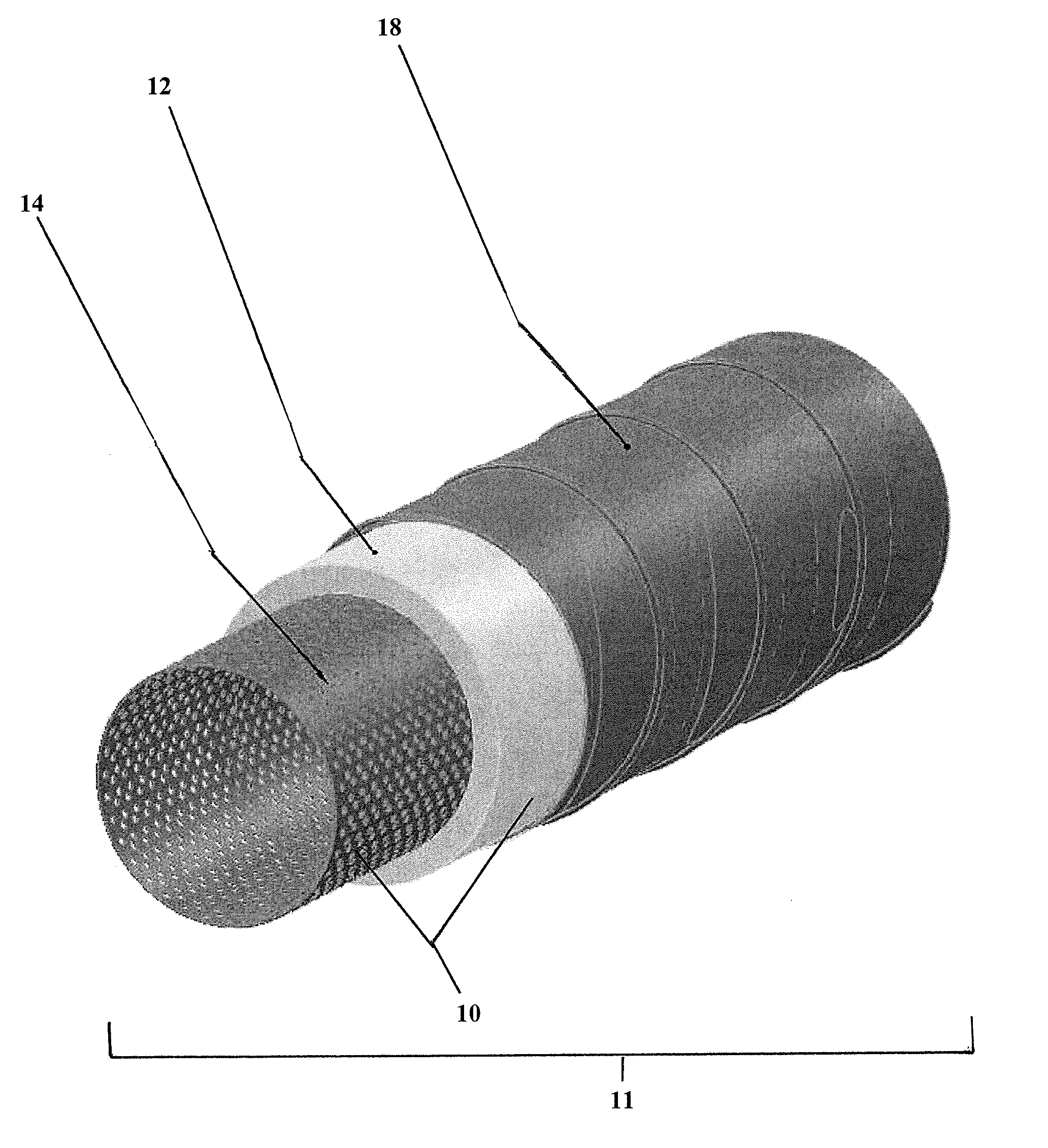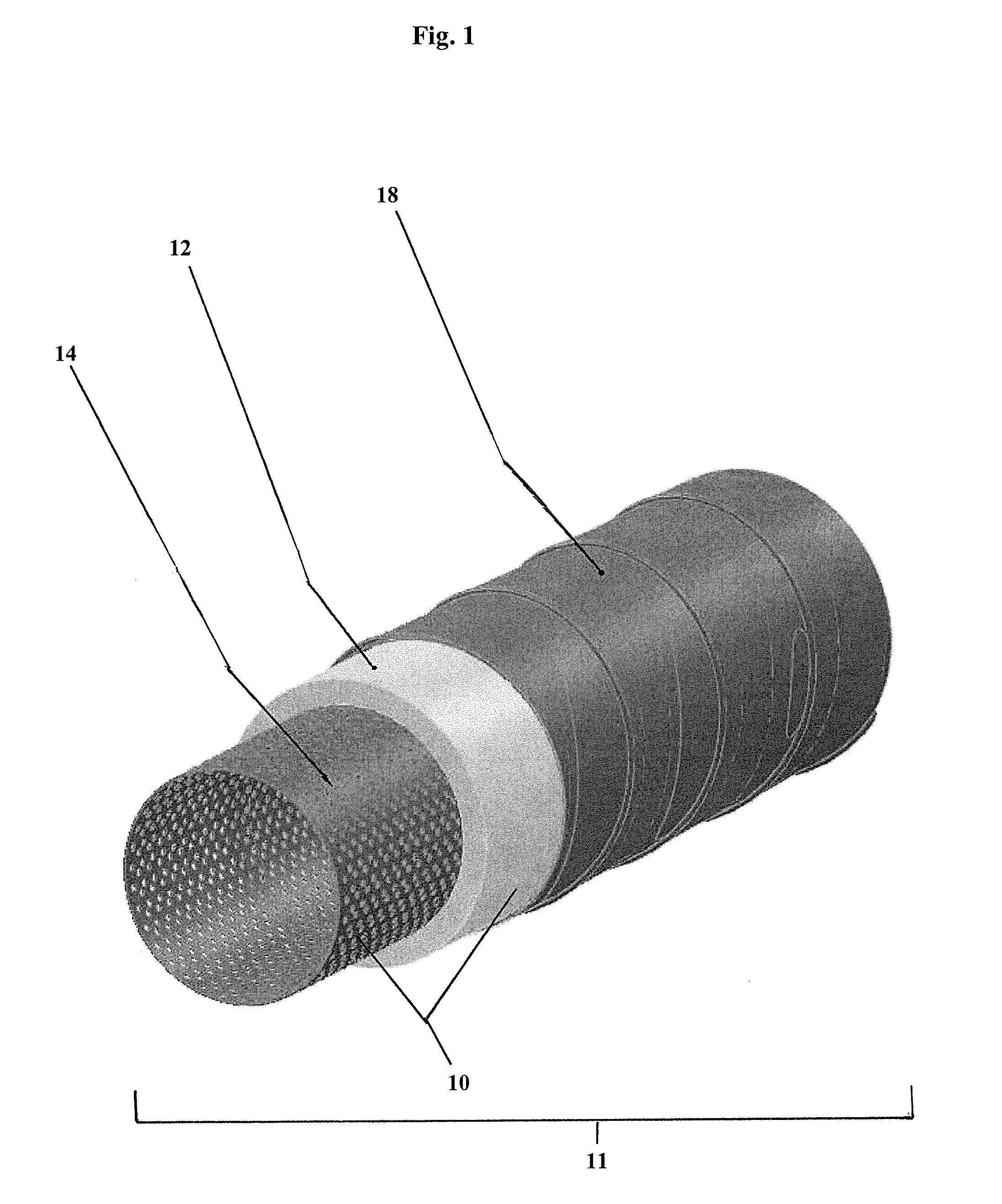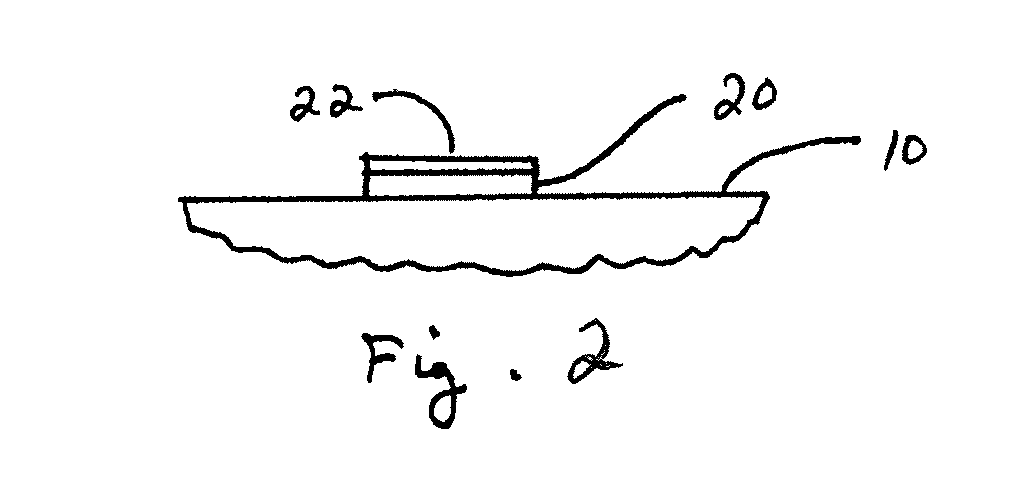Foam insulation structure and method for insulating annular ducts
a technology of insulation structure and annular duct, which is applied in the direction of paper/cardboard containers, containers, building components, etc., can solve the problems of inability to install in annular ducts, inability to maintain unaided annular shape, and insufficient structural integrity of fiberglass insulation materials
- Summary
- Abstract
- Description
- Claims
- Application Information
AI Technical Summary
Benefits of technology
Problems solved by technology
Method used
Image
Examples
Embodiment Construction
[0011]The present invention utilizes an annular duct insulation foam material that demonstrates viscoelastic properties. In preferred embodiments, the foam insulation material is low-density. According to one embodiment, the viscoelastic foam materials of the present invention can be pre-compressed and installed on an insulation retaining insert that can easily be installed inside an annular duct.
[0012]Viscoelastic foam layers for use in accordance with one embodiment of the present invention have an open-cell foam matrix structure. The open-cell structure can be produced via by any suitable method, such as chemical reaction during extrusion.
[0013]In an alternative embodiment, a viscoelastic foam layer in accordance with the present invention is formed from a closed-cell foam in which at least a portion of the closed cells are opened, e.g., by mechanically compressing and fracturing the cell walls, resulting in easy passage of air between the fractured opened cells.
[0014]The viscoel...
PUM
| Property | Measurement | Unit |
|---|---|---|
| thickness | aaaaa | aaaaa |
| thickness | aaaaa | aaaaa |
| thickness | aaaaa | aaaaa |
Abstract
Description
Claims
Application Information
 Login to View More
Login to View More - R&D
- Intellectual Property
- Life Sciences
- Materials
- Tech Scout
- Unparalleled Data Quality
- Higher Quality Content
- 60% Fewer Hallucinations
Browse by: Latest US Patents, China's latest patents, Technical Efficacy Thesaurus, Application Domain, Technology Topic, Popular Technical Reports.
© 2025 PatSnap. All rights reserved.Legal|Privacy policy|Modern Slavery Act Transparency Statement|Sitemap|About US| Contact US: help@patsnap.com



